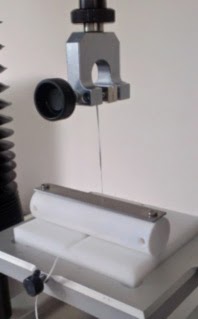Why
bother to floss? Periodontal disease is
one of the most prevalent degenerative conditions in this country, afflicting
adults beginning in their late 20's.
It is the disease that causes people to lose their teeth by slowly dissolving the supporting bone structure surrounding teeth. The most common symptoms of the disease are bad breath and bleeding gums.
It is the disease that causes people to lose their teeth by slowly dissolving the supporting bone structure surrounding teeth. The most common symptoms of the disease are bad breath and bleeding gums.
Flossing is a simple
oral hygiene procedure that, when performed daily, can ensure healthy gums and
teeth that last a lifetime. Experts say it's as indispensable to a healthy
mouth as brushing, yet most people find it uncomfortable and don't do it
regularly. Modern dentistry and dental products have begun to address the
problem of plaque buildup which causes periodontal disease.
New toothbrush designs, mouthwash and toothpaste formulations are being produced specifically to address the need for plaque reduction. For a manufacturer of dental floss wishing to compare smoothness of different formulations and compare with competitive samples we recommended the following test which produced comparative graphs as shown:
|  |
The above test fixture was designed at Stable Micro Systems to originally provide a method of assessing the abrasion and/or frictional properties of abrasive strips by measuring the force resulting from the sliding of these strips against a ceramic cylinder during a tensile test on a TA.XTplus Texture Analyser. Exponent software is then employed to analyse the multi-peak force profiles obtained and apply special calculations to highlight differences between different grades, manufacturers etc. of abrasive strips.
Dental Abrasives (or
Interproximal Dental Strippers) Testing
Abrasive strips are widely used in modern dentistry today. They are usually thin, flexible, one-sided abrasive strips and are available in various sizes and grits, e.g., fine, medium and coarse, which are moved back and forth between the teeth to shape the actual sides of the teeth.
Abrasive strips are widely used in modern dentistry today. They are usually thin, flexible, one-sided abrasive strips and are available in various sizes and grits, e.g., fine, medium and coarse, which are moved back and forth between the teeth to shape the actual sides of the teeth.
In the discipline of
orthodontics it is often necessary to reduce tooth structure interproximally to
correct for inadequate space caused by dental crowding and in restorative
dentistry to trim or contour various types of restorative materials such as
amalgam, composite resin or porcelain (dental veneers).
|
A host of additional dental
product testing solutions
 | |
| 1: Dental Fixative Adhesiveness; 2: Gum hardness, stickiness and coating crispness; 3: Consistency and extrudability of toothpaste; 4: Dental Floss tensile strength |
Recent Academic Dental Applications
Researchers at Lille University in France have been using their TA.XTplus Texture Analyser in their recently published work: 'In situ forming implants for periodontitis treatment with improved adhesive properties'.
Novel in situ forming implants are presented showing a promising potential to overcome one of the major practical hurdles associated with local periodontitis treatment: limited adhesion to the surrounding tissue, resulting in accidental expulsion of at least parts of the implants from the patients’ pockets. This leads to high uncertainties in the systems’ residence times at the site of action and in the resulting drug exposure.
Read more about their work...
For more information on how to measure texture, please visit the Texture Analysis Properties section on our website.
 The TA.XTplus texture analyser is part of a family of texture analysis instruments and equipment from Stable Micro Systems. An extensive portfolio of specialist attachments is
available to measure and analyse the textural properties of a huge range of
food products. Our technical experts
can also custom design instrument fixtures according to individual
specifications.
The TA.XTplus texture analyser is part of a family of texture analysis instruments and equipment from Stable Micro Systems. An extensive portfolio of specialist attachments is
available to measure and analyse the textural properties of a huge range of
food products. Our technical experts
can also custom design instrument fixtures according to individual
specifications.No-one understands texture analysis like we do!
To discuss your specific test requirements click here...
 |  |  |



No comments:
Post a Comment